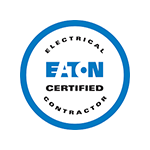Owning a backup generator is a sensible move for any homeowner, and if you have made the decision to purchase a generator, then you should feel good about your choice. However, if you want your generator to be ready when you need it, then it is important to remember that backup generators do require some maintenance.
There are a variety of important maintenance steps that should be performed on a regular basis to ensure reliable operation. Below are a list of these important items and what you should know to keep your generator operational.
Fuel Tank and System
The lifeblood of your generator system is its fuel supply. Depending on your generator type and installation parameters, it may be powered by gasoline, diesel, or natural gas.
If your generator is powered by gasoline or diesel, then it’s critical that you keep the fuel protected from contamination. Water and debris can cause generator fuel to go “bad,” thus preventing your generator from running or causing damage to the engine.
Preventing fuel from being contaminated is mostly a matter of keeping the fuel cap tightly sealed; never leave a fuel cap off for longer than the time it takes to refill the tank. In addition, if your generator uses diesel, you will also need to periodically drain the fuel water filter. This device separates water from the diesel, and water must be drained to prevent possible damage to the motor.
Generators powered by natural gas don’t need much fuel supply attention, but it is still important to take a look at the connection between the generator and external gas lines. Be sure there are no leaks in the line and that the gas shut-off valve remains operational and doesn’t stick during opening and closing.
Engine Coolant
Much like your car, generator engines utilize coolant to prevent overheating. This coolant is located inside a radiator and must be monitored for quantity and quality. Too little coolant could cause the engine to overheat and fail, and old coolant could also result in engine problems.
When changing engine coolant in your generator, be sure the coolant type matches with specifications provided by the manufacturer.
Spark Plug
Another commonly forgotten maintenance item on most backup generators includes the spark plug. This simple, low-cost component can raise havoc by becoming fouled with carbon; this in turn causes engine misfires and other significant problems.
Preventing a spark plug from causing problems entails either cleaning the plug to remove deposits or purchasing a new one entirely. In most cases, replacement is a sound economic decision considering the low cost of spark plugs.
Air Filter
An important maintenance item is cleaning or replacing the air filter on a regular basis. Engine air filters capture potentially harmful substances that can damage your motor and the removal of these particles is important.
Like other consumable items, you may need to periodically replace the engine air filter on your generator. You may be able to invest in a washable, reusable filter, but disposal technology is still advanced.
Oil Change
The oil inside your engine keeps it operating by providing critical lubrication between moving components. In addition, engine oil also acts in a similar way as engine coolant. The oil captures heat inside the engine and moves it out of the system.
When changing oil inside a generator, be careful to replace it with oil that has been listed as meeting manufacturer specification requirements. That means viscosity and oil manufacturer matches are ideal whenever possible. Once every two to three oil changes, consider changing the oil filter to eliminate possible contamination sources.
If you aren’t comfortable performing maintenance on your generator, then be sure to contact a qualified professional for assistance. They can provide you with assistance in the form of advice and can also service your equipment.

















